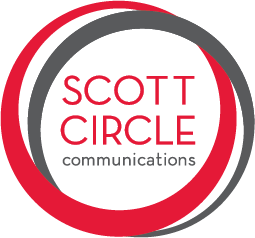Working With What You Got: Resources for Nonprofits to Leverage Communications Efforts
In a world that can seem more focused on who you know and how much money you have, it can be daunting for a nonprofit organization to share their mission and message with the public. Nonprofits face a number of challenges every day, whether it is limited amount of funds or a small staff. However, there are creative ways to leverage current resources to maximize your communications and PR efforts.
Use your current board, staff and volunteers’ perspectives to communicate authentic and concise messaging. Your stakeholders are a very important resource, as they are your biggest advocates and can help ensure messaging is authentic and will resonate with the audience you will want to reach. Having consistent messaging across all marketing materials, internal communications and stakeholder interactions is also important because it will solidify your brand and mission. In order to do this, an organization must get organized and have a strategic plan for what should be accomplished over the course of a few years. Brainstorming top messaging points with your board, staff and volunteers will help keep everyone in the loop and ensure they feel included throughout the process. The messaging points can be goals you all would like the organization to accomplish or mission statements that describe the essence of the organization. Once you have your core messaging points you can plan all further internal and external communication.
Develop strategic partnerships by using member lists, potential partners and media contacts. Your organization’s lists are the most important resources for your mission and cultivating these different lists is something your organization must do every day.
- You must communicate with your members on a regular basis through different channels, including social media, phone calls, events and newsletters. This consistent communication will keep members up to date with the newest data and fundraising goals, relevant articles and the work the organization is accomplishing. Make sure your social media channels are being used at least every other day and that you have an organized email marketing campaign that does not overwhelm email inboxes. By providing members with relevant information on your work, you can encourage them to share these messages with their other networks, and thus organically expand the reach of your organization.
- You can reach partners through external communications channels, such as a quarterly newsletter, social media and through co-hosting partner events. Strategic partnerships are a great resource when it comes to mobilizing for a fundraising campaign or spreading your organization’s message. When working with partner groups, you can utilize your combined resources, collaborate efforts and cross promote on each other’s networks to build momentum and work towards a shared goal.
- Good media relations are at the heart of any effective promotional effort – use your media contacts when you have something to promote, like a fundraising event or a new research report. Remember, not everything is newsworthy. Get to know your media contacts and their beats so you can contact them about something that you know will peak their interest. Establish friendly rapport with reporters so that you can create a mutually beneficial relationship. This way, not only will they potentially cover your organization when you have relevant news, but they may be able to call on you when they need an expert resource with your background.
Create your own content. You are the best at talking about your organization and your mission; use your expertise to create content that you can share with everyone.
Owned media is a great way to communicate with your audience using existing channels – such as a monthly blog on your website, testimonials or case studies of your organization’s work, or even a webinar or podcast hosted by your team. You can also create original content to offer other shared channels – such as guest article placed in an opinion column or a thought piece written for another like-minded organization’s blog, magazine or newspaper. Writing these pieces doesn’t cost anything other than your time - and has great benefits. You can then repurpose your content on other communications channels, such as social media and newsletters, to help make sure you have new and consistent content to share with your stakeholders on a regular basis.
Nonprofits, as a whole, are committed to changing the world and while they may not all have hundreds of volunteers, donors or clients they probably do have a passionate core of supporters that are willing to work hard for their organization to succeed. Using the resources at hand is the first step in ensuring your communications and PR plan is executed in an efficient and well-organized manner and that you are reaching the audiences who may matter the most.
